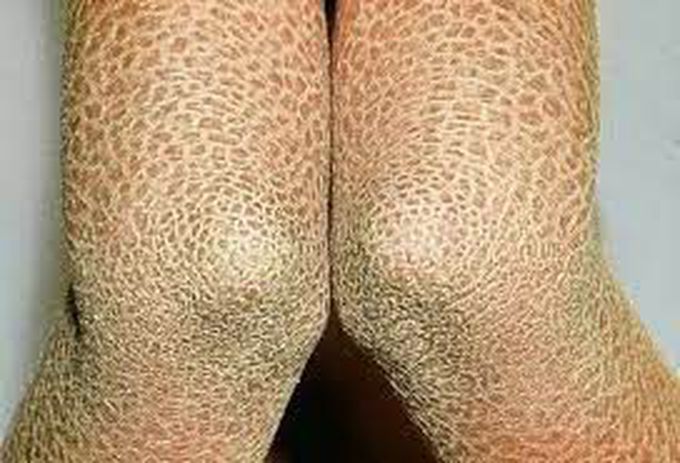


What causes ichthyosis vulgaris?
Ichthyosis vulgaris is most often caused by one’s genes (inherited). However, some patients may “acquire” ichthyosis vulgaris because of a medical illness or in response to a medication. In ichthyosis vulgaris, skin cells reproduce at a normal rate, but they don’t separate at the skin’s surface, as they normally do. Also, dead skin cells don’t shed quickly enough, causing a buildup of scales. Ichthyosis vulgaris in children is usually caused by a gene for the disease that is inherited from one or both parents. This is called inherited ichthyosis vulgaris. Parents don’t have to have the disease to pass the gene onto their children. A child who has inherited the ichthyosis vulgaris gene has a 50% chance of developing the condition. Another potential cause of ichthyosis vulgaris is a gene mutation (change) that can occur during fetal development. If this happens, the child’s skin lacks enough of a key protein called filaggrin, which helps the body create the outermost layer of skin and shed dead skin cells. In adults, the disease is called acquired ichthyosis vulgaris, and can be caused by other diseases, including kidney failure, certain cancers, sarcoidosis, leprosy, and human immunodeficiency virus (HIV). On rare occasions, it can be caused by a medication, such as cimetidine (Tagamet®), which treats ulcers and acid reflux, and clofazimine (Lamprene®) which treats leprosy – or by a vitamin, like nicotinic acid (a B vitamin). The symptoms of ichthyosis vulgaris are the same whether it is inherited or acquired.

